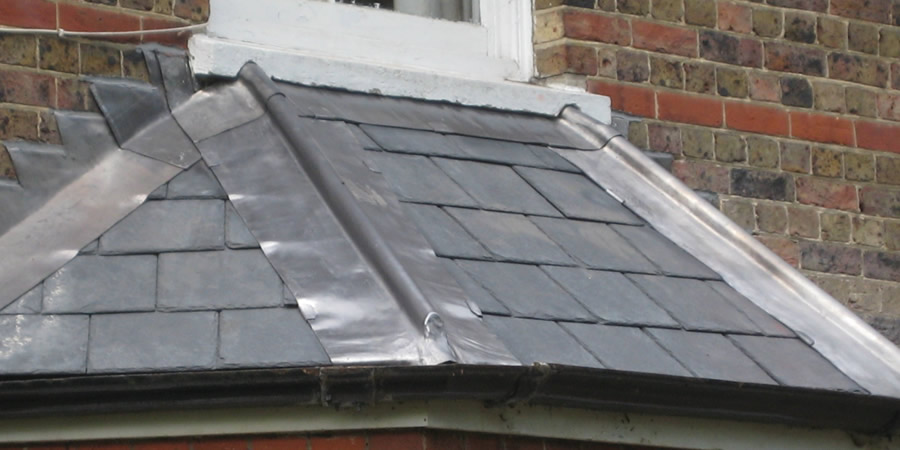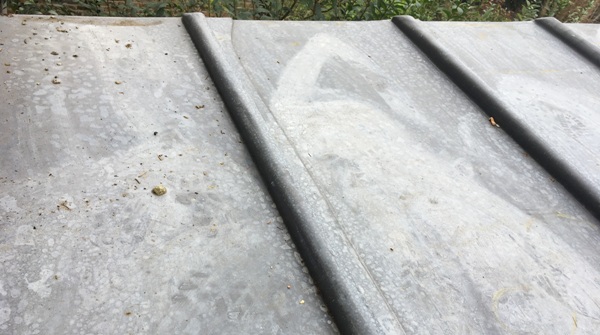Lead in construction
Contents |
[edit] What is lead?
Lead is an element that is naturally occurring throughout the environment. It is a soft, malleable, heavy metal, with a density that exceeds that of most common materials. It has a number of properties that have made it a useful construction material for hundreds of years:
- High density.
- Low melting point.
- Ductility.
- Resistance to oxidation.
- Abundance.
- Ease of extraction.
However, in the late-19th century it was discovered that lead is poisonous, and its use has been less widespread since then. Exposure can result in serious health problems such as kidney disease, anaemia and cancer.
[edit] Construction applications
Lead was used for making water pipes in the Roman Empire, and its production subsequently grew throughout South and East Asia, especially in China and India. Across Europe, lead production began to revive in the 11th and 12th centuries, where it was used for roofing and plumbing. From the 13th century, lead was used to create stained glass. More recently, lead and lead compounds were used for roofs, cornices, tank linings, electrical conduits, cladding, flashing, gutters, and parapets.
Lead was incorporated into soft solder, an alloy of lead and tin, and used for soldering tinplate and copper pipe joints. Lead-based paint inhibits the rusting and corrosion of iron and steel, and continues to be used on steel structures such as bridges, railways, lighthouses, and so on.
[edit] Health risks
Lead dust, fumes or vapour can be created when lead and items containing lead are processed, worked or recovered from scrap/waste. The body absorbs lead when it is inhaled or swallowed, but generally not through the skin. Lead that is absorbed circulates in the blood and bones where it can be stored for many years without ill health developing.
However, high lead content can cause:
- Headaches.
- Tiredness.
- Constipation.
- Nausea and stomach pains.
- Anaemia.
- Weight loss.
More serious symptoms that can develop over time include:
[edit] Working with lead
Lead can be present in the built environment, particularly in older buildings, in the paint, roofing and pipework.
Work that can produce hazardous lead dust, fume or vapour includes:
- Blast removal and burning of old lead paint.
- Stripping of old lead paint.
- Hot cutting in demolition and dismantling operations.
- Scrap-processing.
- Lead roofing.
- Lead smelting, refining, alloying and casting.
- Manufacturing leaded glass.
- Recycling lead-containing materials.
Some prevention and safety techniques that can be employed when working with lead include:
- Using substitute materials.
- Leaving lead paint in place if it is in good condition and/or covered by non-leaded paint.
- Using cold/mechanical cutting instead of hot cutting.
- Using lower temperatures without blow-lamps or gas torches.
- Use chemical paint strippers, wet abrasive paper, scrapers and infrared equipment.
- Wear appropriate respiratory protective equipment, disposable coveralls and gloves.
- Prevent the spread of dust or fumes with plastic sheeting.
- Wash and clean surfaces which may have been exposed to dust or fumes.
- Dispose of contaminated waste safely.
- Wash hands and forearms thoroughly after working with lead.
- Avoid hand-mouth/eye contact when in contaminated areas.
[edit] Types of lead
Lead is typically available as as:
Rolled lead sheet is available in a range of codes (generally codes 3-8 for construction) as defined in BS EN 12588:2006: Lead and lead alloys. Rolled lead sheet for building purposes. The code relates to the thickness of the sheet; with code 3 being 1.33 mm thick and code 8 being 3.55 mm thick.
[edit] Related articles on Designing Buildings
- Aluminium.
- Asbestos.
- Construction dust.
- Construction materials.
- COSHH.
- Deleterious materials.
- Flashing.
- Hazardous substances.
- Lead.
- Paint.
- Risk assessment.
- Soldering.
- Spangle.
- Tin.
- Types of roof.
- Volatile organic compounds.
[edit] External resources
Featured articles and news
RTPI leader to become new CIOB Chief Executive Officer
Dr Victoria Hills MRTPI, FICE to take over after Caroline Gumble’s departure.
Social and affordable housing, a long term plan for delivery
The “Delivering a Decade of Renewal for Social and Affordable Housing” strategy sets out future path.
A change to adoptive architecture
Effects of global weather warming on architectural detailing, material choice and human interaction.
The proposed publicly owned and backed subsidiary of Homes England, to facilitate new homes.
How big is the problem and what can we do to mitigate the effects?
Overheating guidance and tools for building designers
A number of cool guides to help with the heat.
The UK's Modern Industrial Strategy: A 10 year plan
Previous consultation criticism, current key elements and general support with some persisting reservations.
Building Safety Regulator reforms
New roles, new staff and a new fast track service pave the way for a single construction regulator.
Architectural Technologist CPDs and Communications
CIAT CPD… and how you can do it!
Cooling centres and cool spaces
Managing extreme heat in cities by directing the public to places for heat stress relief and water sources.
Winter gardens: A brief history and warm variations
Extending the season with glass in different forms and terms.
Restoring Great Yarmouth's Winter Gardens
Transforming one of the least sustainable constructions imaginable.
Construction Skills Mission Board launch sector drive
Newly formed government and industry collaboration set strategy for recruiting an additional 100,000 construction workers a year.
New Architects Code comes into effect in September 2025
ARB Architects Code of Conduct and Practice available with ongoing consultation regarding guidance.
Welsh Skills Body (Medr) launches ambitious plan
The new skills body brings together funding and regulation of tertiary education and research for the devolved nation.
Paul Gandy FCIOB announced as next CIOB President
Former Tilbury Douglas CEO takes helm.
UK Infrastructure: A 10 Year Strategy. In brief with reactions
With the National Infrastructure and Service Transformation Authority (NISTA).
























